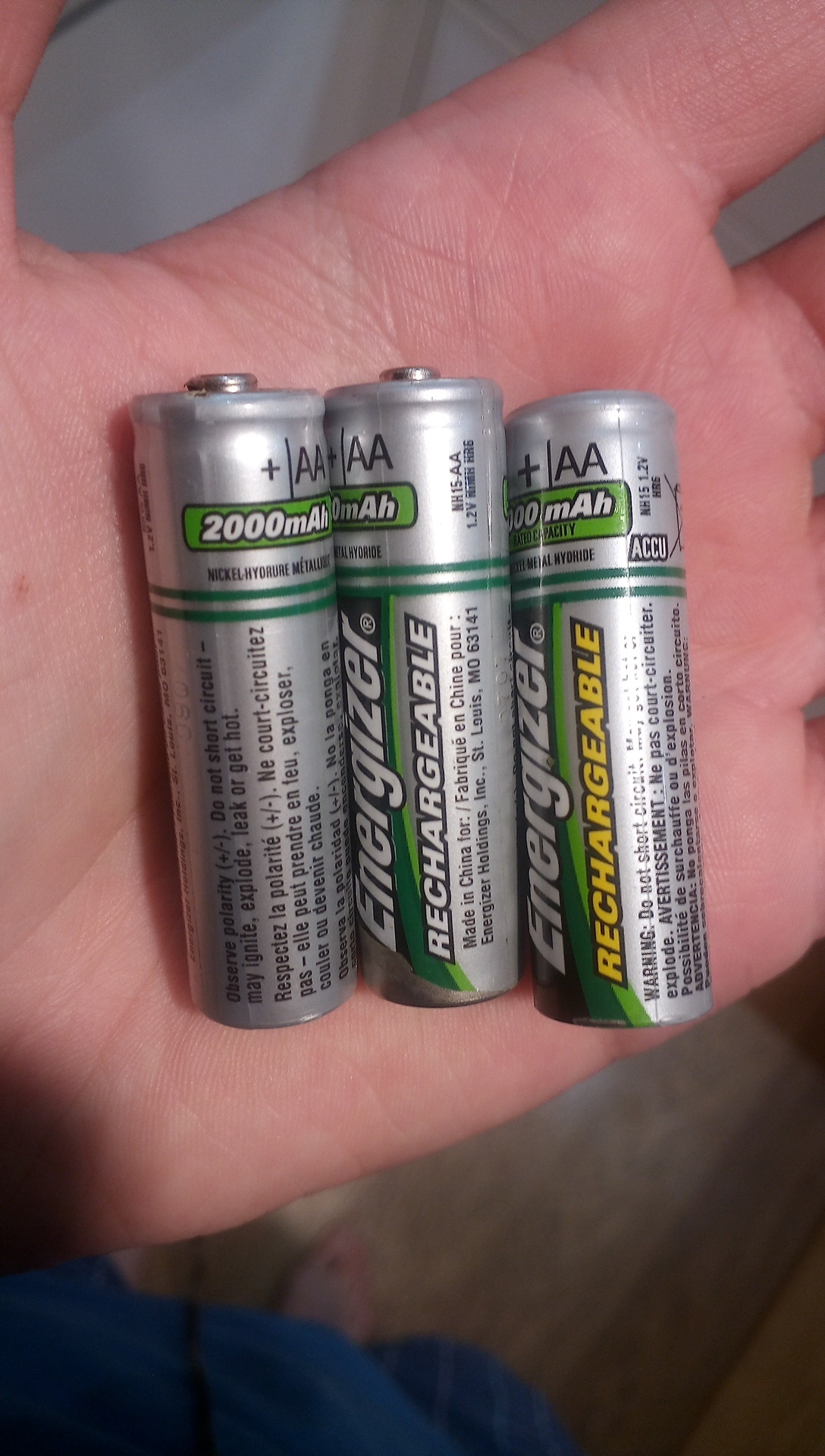430
you are viewing a single comment's thread
view the rest of the comments
view the rest of the comments
this post was submitted on 07 Aug 2023
430 points (100.0% liked)
Technology
37750 readers
249 users here now
A nice place to discuss rumors, happenings, innovations, and challenges in the technology sphere. We also welcome discussions on the intersections of technology and society. If it’s technological news or discussion of technology, it probably belongs here.
Remember the overriding ethos on Beehaw: Be(e) Nice. Each user you encounter here is a person, and should be treated with kindness (even if they’re wrong, or use a Linux distro you don’t like). Personal attacks will not be tolerated.
Subcommunities on Beehaw:
This community's icon was made by Aaron Schneider, under the CC-BY-NC-SA 4.0 license.
founded 2 years ago
MODERATORS

For example, basically all power tool batteries.
If they advertise ~12V, it usually means it is 3 'cells' of 18650s in series. Crack open the case on such a tool battery and you'll find just that -- 3 18650 batteries for a little one. A high capacity battery might instead of 6, with 3 pairs of 2 parallel batteries, doubling the capacity. And nothing but weight and size stops them from just making them ever-larger.
18-20v tools are 6 cells (18v is the nominal voltage, 20v is the 'max' voltage at full charge). For higher cap, add more batteries in parallel in each series cell.
It is RARE to be able to service these unless you have some specialized skills. Typically, they are spot welded together, which can be dangerous to attempt to DIY. That said, often when a battery 'fails', it's actually just one 18650 that has failed and taken the others down with it.
These days you do see other sizes. 21700s or even pouch batteries are starting to be more common when tools need more stored joules per unit volume.
There are some clever innovations from some tool manufacturers too.
DeWalt has launched batteries that work with both 18v and 54v systems, by having different pins on the output wired to different points in the battery chain.
(3 sets of 3 in series for 18v, or 9 in parallel for 54v, I'm assuming)
20V tools are 5S rather than 6S
That's not my experience - my preferred brand* offers 18V batteries at 3Ah, 6Ah and 9Ah. They also have higher end tools that take 56V batteries - either 4Ah or 8Ah.
I haven't opened them up to check, but surely the higher capacity batteries have more cells.
(* preferred brand because it's the one I already have a bunch of batteries for... I actually regret choosing that brand)
Sure... but if you replace that one "bad" cell before it takes down the others, the battery might spontaneously combust and burn down your house while you're (hopefully?) not home. 18650's in series have to be the same voltage throughout the charge cycle.
The charger for the tool batteries has to have circuits to get all individual cells to the same voltage. They are not simply charging them all at once in series. More complex than that, but there is a second circuit for an alternate config that the charger can make use of to charge.
If one cell is dying/dead, it stops the whole battery from working. Replacing that individual cell would allow the others that are still performing nominally to continue to do so. If it were practical to change one cell. Which it really isn't. But old tool batteries can be a good place to cannibalize 18650s from if you need them for other uses because a "dead" battery likely still has at least some OK 18650s in it.
The 56-60V tools just has triples of all the batteries with an additional circuit path to let them either function in the 18V 5s or 56v 15s configuration, depending on what it is plugged into. Similar story with the brands advertising 40V tools. There's a reason they're all staying on multiples of the 18-20V base.
I literally said there can be more 18650s for each series cell. The "not your experience" you referenced is... exactly the same thing I said. Though it is actually 5 18650s for a base battery, not 6, I misremembered that. 3.7V x 5 cells = 18.5V (which some brands advertise as a max 20V to make the number bigger while others just call it 18V). Each cell is 2.4 Ah, which gets you the base battery capacity. The even-smaller cells are either using pouch batteries or something else that isn't an 18650.